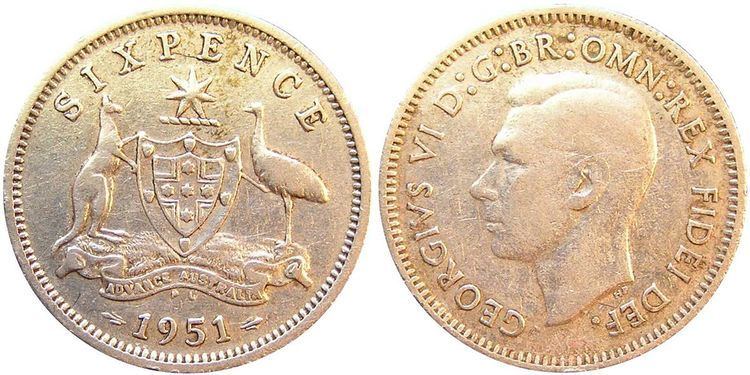 | ||
The Australian sixpence was a coin used in the Commonwealth of Australia prior to the decimalisation of the Australian currency in 1966. The pre-decimal sixpence was minted from 1910 until 1963, excluding the years 1913, 1915, 1929–33 inclusive, 1937, 1947 and 1949.
The sixpence was the only pre-decimal Australian coin which never had the design on its reverse altered. That is especially surprising given that the coat of arms depicted was obsolete for almost all of that time, having been superseded by the current one in 1912.
During World War II, between 1942 and 1944, sixpence production was supplemented by coinage produced by two branches of the United States Mint. Coins struck at the San Francisco mint (1942–1944) carry a small S below the coat of arms, while those from the Denver mint (1942–1943) have a small D in the same place.
From 1910 to 1945 Australian sixpences were of sterling silver (0.925 fine) with 7.5% copper; from 1946 to 1963 they were reduced to 0.500 fine silver which is made from 50% silver, 40% copper, 5% nickel and 5% zinc.
After decimalisation on 14 February 1966, the sixpence continued to circulate at the value of 5¢, along with new 5¢ coins of the same size and weight.
